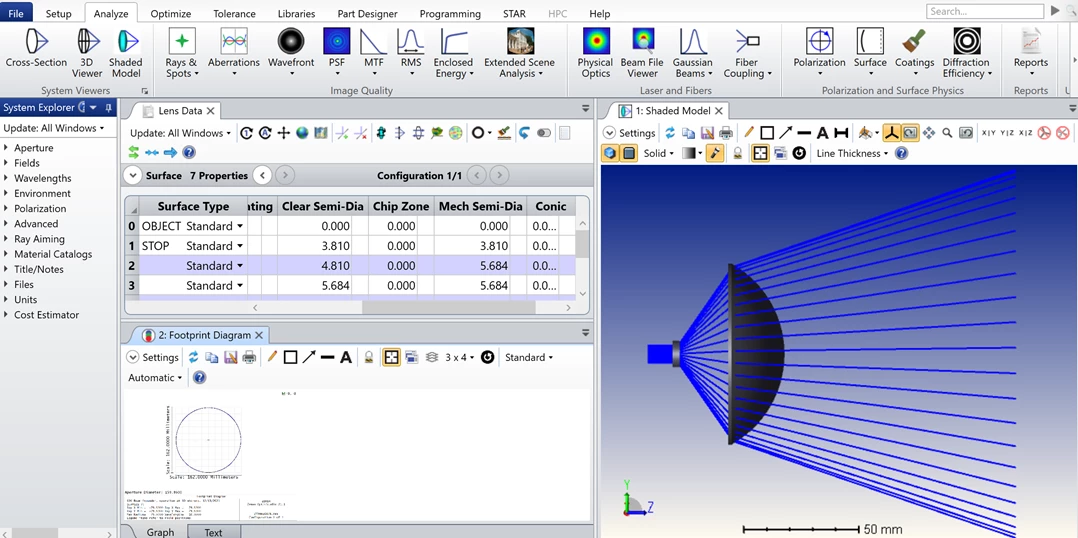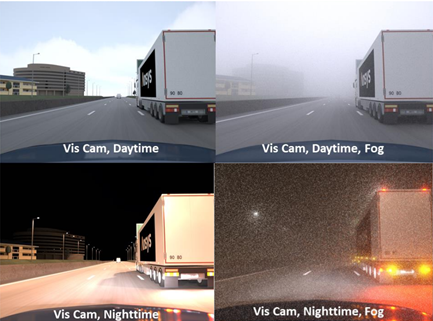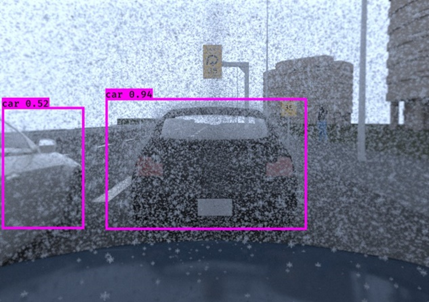Explore how multi-physics simulation can take the guess work out of design, reducing the need for expensive and time consuming lab tests. Take it a step further, simulate real world use cases, there by reducing the number of field testing scenarios needed.
An evolving industry, automotive lighting used to be a lot of trial and error, now simulation has become the rule rather than the exception. For internal lighting, plastic fiber would be sanded by hand with various grit paper and then tested in a prototype lab to “see” the effects. With OpticStudio fiber of various geometry, coatings, materials and textures can be simulated in a fraction of the time a physical test requires. Headlamps, taillights and reflectors were built in much the same way, a design was built and tested in the lab. OpticStudio can take the initial design, optimize the design, even allowing for material substitutions and run tolerancing, all of which would take far more time if done manually. Now with the tools of Ansys, a project can be taken to levels that no single software alone could attain.
Use OpticStuido to take a spec sheet or government requirement as the bases for an initial layout for items such as the placement of detectors and sources. Create the design of the reflector or headlamp, optimize and tolerance the optical design in OpticStudio. Interrogate the light with a myriad of analytic tools, produce reports and visuals from the simulation. In the example below sequential mode was used for the headlamp lens, for reflection non-sequential mode would be used.

Did you know that with other Ansys simulation software this simulation can be taken even further? Now you can simulate the environment for various driving conditions with the optical system and have an accurate visual representation of the end users experience. Simulate not only the improvements in your design but also how that design will perform in fog, snow, sleet, rain, hail, etc. The image below shows a simulation run in Speos, it illustrates the effects of fog VS clear weather during day and night conditions.

If you want to take simulation further, CFD can be leveraged. In this simulation the effects of rain were modeled using Ansys Fluent and Speos together. Ansys Fluent allows for not only the rain, but the side splash of other vehicles, tires and the turbulent flow patterns off of another vehicle to be incorporated.

(Right) 3D texture in Ansys Speos
Numerical values in the images below are the confidence intervals in the detection of each object being simulated. This allows the user to run multiple “what-if” scenarios and quickly ascertain the impact of an array of variables, such as, weather, the color of a vehicle, congested traffic VS open road, etc.


Please note, this post only contains a cursorily look at this topic. Modeling CFD and the optical effects of it are a fascinating topic that is far more detailed than a blog post allows. For more information, please contact an Ansys sales representative.


